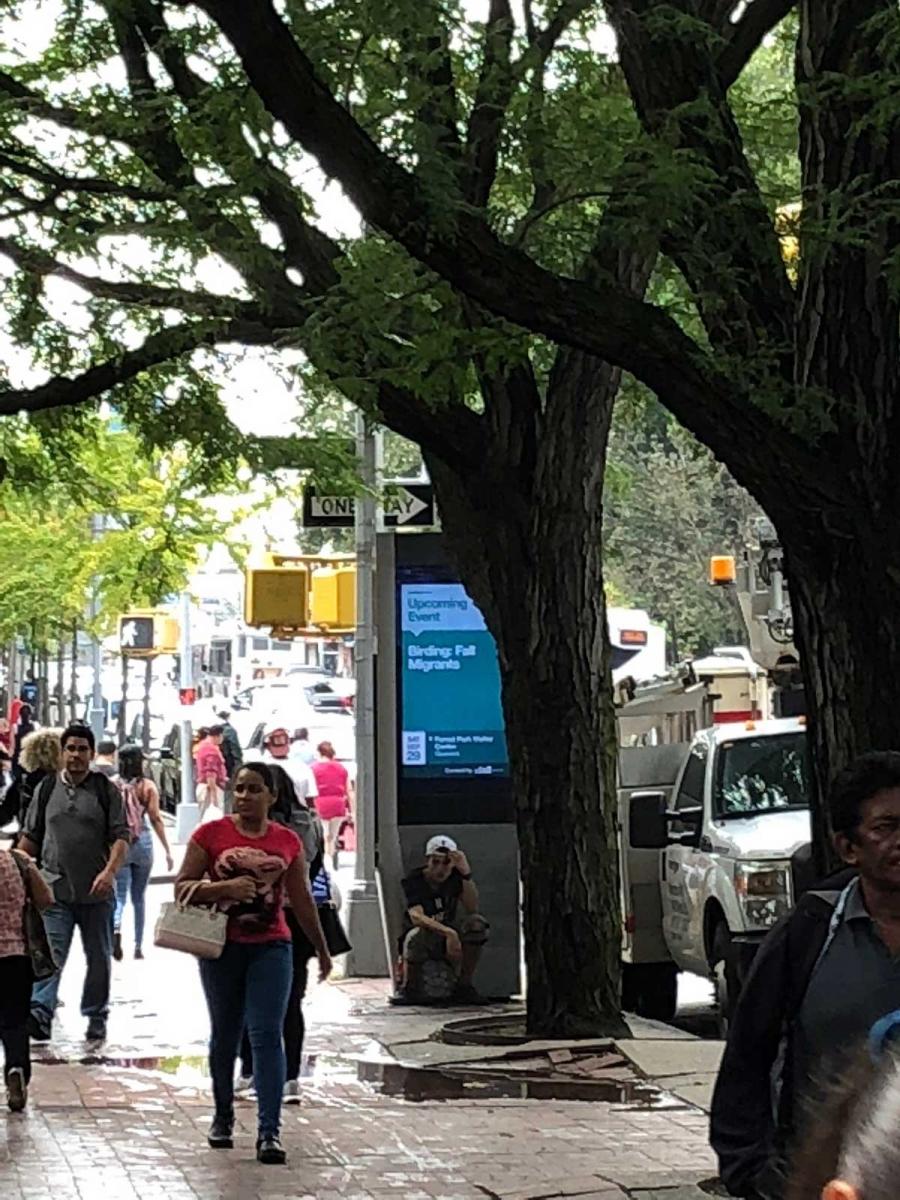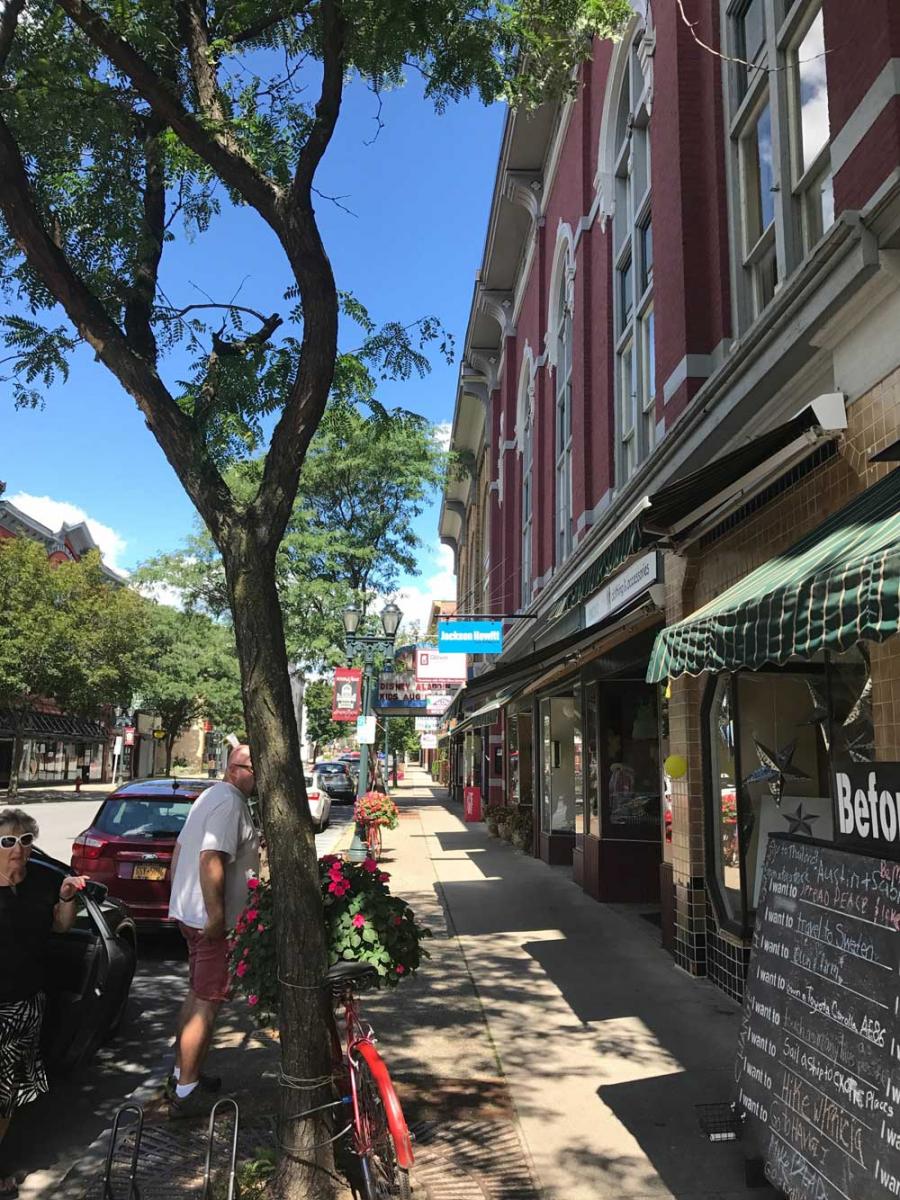
How a Manhattan park pioneered Main Street placemaking
It may be hard to believe now, but several decades ago Bryant Park in Midtown Manhattan was a dangerous place. It was dubbed “needle park” for the drug dealers and their customers who occupied it. Surrounding office towers were plagued by vacancy.
After a four-year renovation by the Bryant Park Restoration Corporation (BPRC), the park became one of the premier public spaces in New York City by the mid-1990s. It now gets 12 million visitors a year. The real estate in the immediate vicinity rose in value by about $5 billion.
As a young urbanist in the mid-1990s, I read that Bryant Park was a triumph of the ideas of writer William Whyte, who recommended simple design changes to connect the park to surrounding streets and improve visual and physical access to the city. I also learned about the 2,000 famous movable chairs—a Whyte idea—that turned the park lawn into a “theater of shifting stage sets,” as described by Gianni Longo’s Guide to Great American Public Places (1996).
That’s all true, but it’s a tiny part of a much bigger story that urbanists ought to know—and that tale is told in full in Learning from Bryant Park: Revitalizing Cities, Towns, and Public Spaces, by Andrew M. Manshel. With respect to Whyte, Manshel notes that design was far less important to the revival of the park and its vicinity than ongoing maintenance and creative programming.
The title of the book underplays the breadth of the content, because it sounds like it focuses on a half-block public space in Manhattan. Learning from Bryant Park is about ideas that were successfully transferred to the main street of a mostly minority community in Queens and a small city in Upstate New York. He relates the ideas to specific public spaces in Cleveland, Detroit, Los Angeles, Cincinnati, and Miami. Manshel is a good storyteller who served as associate director and counsel of BPRC for 10 years beginning in 1991, and later became executive vice president of Greater Jamaica Development Corporation in Queens.

Learning from Bryant Park opened my eyes up to a world of placemaking that goes well beyond design but ties into the ideas of New Urbanism. It ultimately offers a vision for the revitalization of urban places—especially small cities and towns that have been overlooked—all across America.
Conscientious maintenance is one of “two basic pillars of public space revitalization through placemaking,” Manshel writes. The intellectual framework is the “broken windows theory,” articulated in a 1982 article in the Atlantic by James Q. Wilson and George L. Kelling. Wilson and Kelling wrote that once a single window is broken in an abandoned building, all of the windows will quickly become broken. Visual clues tell visitors whether a place is under social control.
Prior to the BPRC, needles in the dirt, graffiti, broken structures, and poorly maintained landscaping communicated to most visitors that they should stay away from the park. BPRC installed high-maintenance landscaping—including 100-foot-long rows of flowers, which were immediately stolen. The flowers were replaced every night until the thieves simply gave up, Manshel writes. The gardeners become part of the “eyes on the street” looking over the park. Similarly, the movable chairs, which were rarely stolen, convey a strong message to visitors. Learning from Bryant Park tells great stories, including how they selected and purchased the specific green-colored French café chairs. Bryant Park innovated many trends, including movable chairs, hanging flower baskets, and outdoor movies, that became viral in public spaces across the US.
The park’s lush lawn is another seemingly simple idea that is far more difficult to pull off than it appears. To maintain two acres of grass where millions of visitors are encouraged to use the lawn is complicated and difficult—it took BPRC four years to get it right. That story is worth reading if you are in charge of a well-used public green space.
The second pillar is programming. Manshel’s philosophy was to say yes to nearly everything. “From summer concerts to winter ice-skating, the park is always packed with activity. … A driving principle is that ‘good uses drive out bad.’ ” He successfully applied that philosophy of “saying yes” to Jamaica in Queens.
“Programming doesn’t necessarily mean performances. It can be plants. It can be games. It can be selling food or big, splashy commercial promotions. It can be anything that is activity in the space that people find attractive.”
Manshel describes a placemaking that is the opposite of Daniel Burnham’s “make no small plans.” Big, expensive, difficult-to-reverse ideas failed in Bryant Park, Jamaica, and other communities described in the book. Placemaking is an iterative process of small changes that are constantly adjusted, based on how people respond, he says. “In placemaking, when you see that ideas aren’t working out and aren’t effective in drawing people into a space, then you need to reverse course.”

Learning from Bryant Park covers many interlocking ideas, and I will list a few that are relevant to new urbanists:
- Manshel generally advises against spending a lot of money on streetscape improvements and park design, but this is a nuanced topic. Trees are one exception to this rule. Street trees are a prominent feature of the greatest streets in the world, he says, and shade is critically important for public space. Pershing Square is Los Angeles’s version of Bryant Park, but a $14.5 million 1990s redesign failed, partly due to a lack of trees that leave the space “hot, dusty, and deserted.”
The author is a proponent of traffic calming where necessary, because a main street where cars travel 45 mph is not going to attract people. Streetscape improvements are important for traffic calming. Yet Manshel makes a valid point that a lot of money can be spent on pavement that visitors may not even notice. Far less expensive flower boxes may have a bigger impact. - The frontages along a main street are hugely important to placemaking—and new urbanists know that lesson well, but Manshel brings some valuable realism to the topic. Independent retailers tend to design and maintain their storefronts poorly, and they resist change. Even programs that pay for design and the cost of storefront improvements tend to get few takers, he says. The key is to get a relatively small number of key landlords to improve their storefronts, and “other property owners and merchants feel obliged to upgrade as well,” he writes.
Retail is a key part of an overall strategy for downtowns. “A formula combining shade, seating, great plants and flowers, a continuous retail street wall, and sidewalk dining and drinking can be a winning one anywhere. Thoughtfully programmed Main Streets are coming back, and transforming them into great places is essential to their renewed success.” - On Jamaica Avenue in Queens, providing free rehearsal and performance space to artists was a successful revitalization strategy. Word got around about a community that was eager to host artists, who helped to animate the street at night. The author tells that story of Wynwood in Miami, one of the great creative placemaking stories. The Goldman family made a nondescript warehouse district cool by getting well-known artists to paint more than 80,000 square feet of formerly blank walls.
- BPRC was one of the early business improvement districts (BIDs), and Manshel describes their role in placemaking, in addition to the similar role of nonprofit economic development organizations like the Greater Jamaica Development Corporation (GJDC). While maintenance and programming are critical for BIDs and nonprofits, they can also acquire debt, purchase and fix up properties undervalued by the private sector, focus activity in a critical mass, and innovate programs that change the perception of a place.
- Learning from Bryant Park is a book about the economic development power of placemaking. Hundreds of millions of dollars were spent in moving government buildings to Jamaica’s main street, in the hopes of revitalization. Partly because of bad design, there was very little spillover benefit to the community. GJDC’s smaller, iterative placemaking efforts have ultimately turned the tide and attracted private investors, Manshel says. The key, and new urbanists know this, is to create a place where businesses want to be. States would be wise to fully fund main street programs, encourage DOT traffic calming, and make other investments like activating empty retail space and replacing signage. “Statewide programs like these would cost a fraction of the expense of a single capital project or most incentive programs used to attempt to attract a large new corporate venture,” and would be more effective, he says.
Public space improvement “is an essential cornerstone to a high quality of life,” and this is true in big cities like Manhattan, disinvested neighborhoods like Jamaica, and small cities, towns, and neighborhoods everywhere.
Learning from Bryan Park is a powerful book—and important book—on placemaking and urban revitalization.




